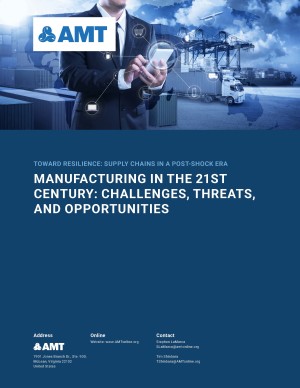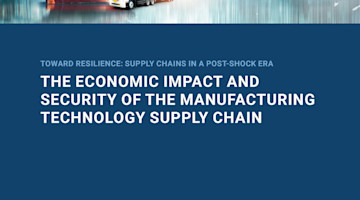In the coming decade, new technologies and manufacturing processes will lead to the creation of new types and classes of materials and products. Manufacturing is a dynamic industry and will likely become exponentially more so given these changes. Yet the industry faces several major challenges, threats, and opportunities, and its continued strength in the United States cannot be taken for granted. The move of so many manufacturers to offshore production has seriously eroded the domestic capabilities needed to turn innovations into high-quality, cost-competitive products.
Recent history as well as research by prominent economists, engineers, and others at major universities and organizations throughout the country shows that when manufacturing production moves offshore, it leads to the movement of key technical capabilities and skills, tacit knowledge, and continued knowledge development offshore as well. These are the capabilities that underlie innovation, and the entire economy loses, not only the manufacturing ecosystem.
Research has also looked at factors that influence decision-makers at SMBs and startups to offshore. Both SMBs and startups have limited resources and are often risk averse in terms of introducing new manufacturing processes, materials, and products because of the financial risk. To change a manufacturing process requires a major capital investment in new production property, plant, and equipment (PP&E) – a sunk cost – with uncertain ROI, and many firms seek external production capabilities as they move from idea to prototype to commercial-scale manufacturing.
There are important policy implications that emerge from this research. Recommendations and commentary that have been made by industry experts point out that significant public resources are designed to foster innovation in the economy. However, it is not enough to focus on only starting firms in the United States; we must also develop programs and policies on how to grow them here and keep them here during this stage of their growth.
Public policy must explicitly address the importance of innovation in the manufacturing industry because it impacts innovation on a national scale. Tax and trade policy alone have not resulted in an American manufacturing resurgence, and policymakers must think beyond these tools if they want to provide incentives to the manufacturing industry.
Federal and state government should support domestic manufacturing by supporting education and training, increasing graduate fellowships in engineering, and funding more four-year engineering technology programs that focus on application and implementation rather than concepts and theory. The federal government can also play an important role by making greater investments in translational research. It invests about $150 billion annually in science and technology, yet relatively little of this money is devoted to the translational R&D in engineering and manufacturing needed to turn basic research results into successful commercial products.
To learn more about the importance of fostering innovation in the manufacturing ecosystem and public policy discussion on the possible role of the public sector, read the full white paper here.






